Linamar Bundle
Who Really Owns Linamar?
Understanding the ownership structure of a company like Linamar Corporation is crucial for investors and business strategists alike. Linamar's journey, from its humble beginnings to its current global presence, is a compelling case study in corporate evolution. This exploration dives deep into the Linamar SWOT Analysis to uncover the key players shaping its future.
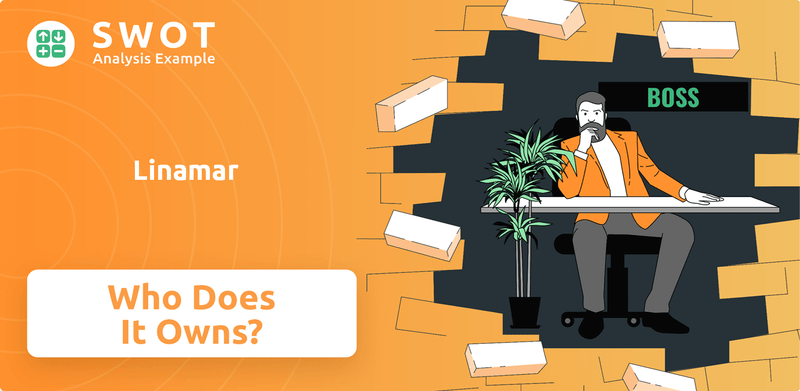
From its founding by Frank Hasenfratz, to its current status as a publicly traded entity, the dynamics of Linamar ownership have significantly influenced its strategic direction and financial performance. This analysis of who owns Linamar will examine the impact of major shareholders, the evolution of its stock, and how these factors contribute to its overall success. The company's history and its current market position offer valuable insights for anyone interested in the Canadian manufacturing sector, and understanding the company's ownership is key to understanding its future.
Who Founded Linamar?
The story of Linamar's brief history begins with Frank Hasenfratz, who founded the company in 1966. He used his engineering background to establish a precision machining business. The initial ownership was primarily vested in Hasenfratz, reflecting his vision and control over the company's early direction.
Specific details about early equity splits or initial shareholding percentages are not publicly available for the company's private beginnings. However, the company's growth trajectory indicates that Hasenfratz maintained significant control during the initial phases. This centralized control was crucial for setting a clear strategic direction in the company's formative years.
Early financial backing likely came from self-funding or conventional debt financing, common for small manufacturing operations at the time. There's no widely publicized information about angel investors or significant stakes held by friends and family during this period. Agreements like vesting schedules or buy-sell clauses were internal and not publicly disclosed. There were also no widely reported ownership disputes or buyouts that significantly changed the early ownership structure.
The initial ownership of Linamar Corporation was tightly held by founder Frank Hasenfratz. His engineering expertise and vision were central to the company's formation and early strategy. The company's early financing likely came from conventional sources rather than external investors.
- Frank Hasenfratz founded Linamar in 1966.
- Early ownership was primarily controlled by the founder.
- Financing came from self-funding and debt, not external investors.
- There are no public records of early ownership disputes.
Linamar SWOT Analysis
- Complete SWOT Breakdown
- Fully Customizable
- Editable in Excel & Word
- Professional Formatting
- Investor-Ready Format
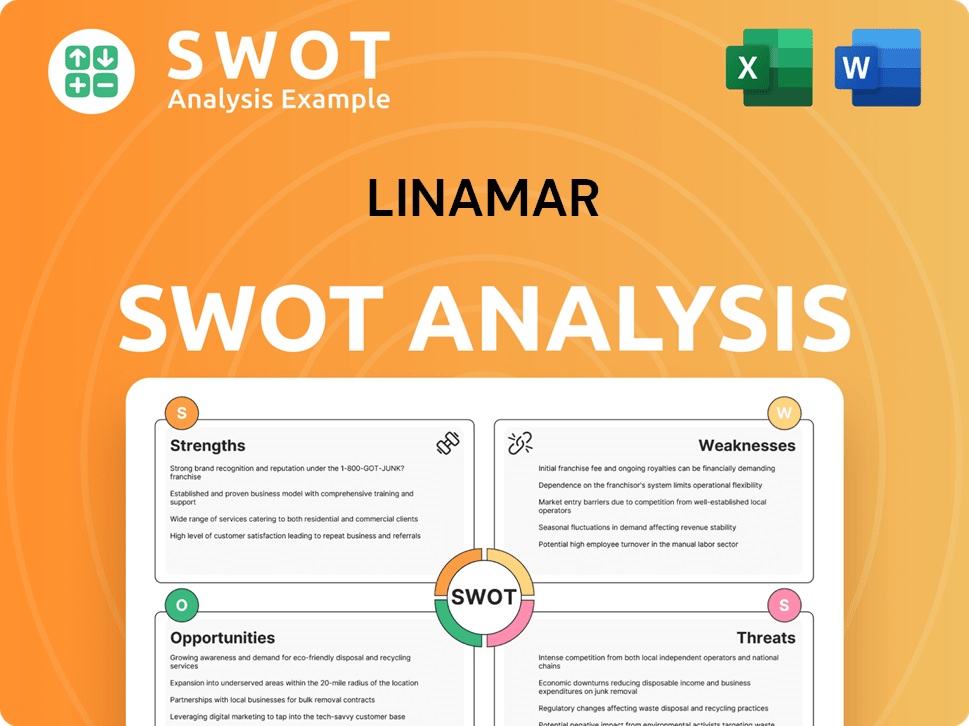
How Has Linamar’s Ownership Changed Over Time?
The ownership structure of the Linamar Corporation significantly evolved with its initial public offering (IPO) on the Toronto Stock Exchange. This transition to a publicly traded company marked a pivotal moment, broadening its shareholder base. Details regarding the exact IPO date and initial ownership distribution would be available in the company's historical filings.
Post-IPO, the ownership landscape of Linamar has been shaped by the involvement of institutional investors, mutual funds, and index funds, which have acquired substantial stakes. The founding family, the Hasenfratz family, has maintained a significant ownership position. The interplay between the founding family's control and the influence of institutional investors has shaped the company's strategy and governance, leading to increased scrutiny of financial performance and strategic decisions.
| Ownership Event | Impact | Stakeholders Involved |
|---|---|---|
| Initial Public Offering (IPO) | Transition from private to public ownership; increased shareholder base. | Hasenfratz family, early investors, and new public shareholders. |
| Institutional Investment | Increased influence of institutional investors; potential shifts in strategic direction. | Investment firms, mutual funds, index funds. |
| Family Ownership | Continued influence of the founding family; potential for long-term strategic focus. | Hasenfratz family. |
Major stakeholders in Linamar include a mix of institutional investors and the Hasenfratz family. The specific percentages held by each would be available in the most recent SEC filings or annual reports. The presence of institutional investors often encourages greater transparency and adherence to corporate governance best practices. For a deeper dive into Linamar's strategic development, consider reading about the Growth Strategy of Linamar.
Linamar's ownership structure has evolved significantly since its IPO, with the Hasenfratz family maintaining a substantial stake alongside institutional investors.
- The IPO broadened the shareholder base, introducing public investors.
- Institutional investors play a significant role in the company's governance.
- The Hasenfratz family continues to be a key stakeholder.
- Ownership changes influence strategic direction and financial performance.
Linamar PESTLE Analysis
- Covers All 6 PESTLE Categories
- No Research Needed – Save Hours of Work
- Built by Experts, Trusted by Consultants
- Instant Download, Ready to Use
- 100% Editable, Fully Customizable
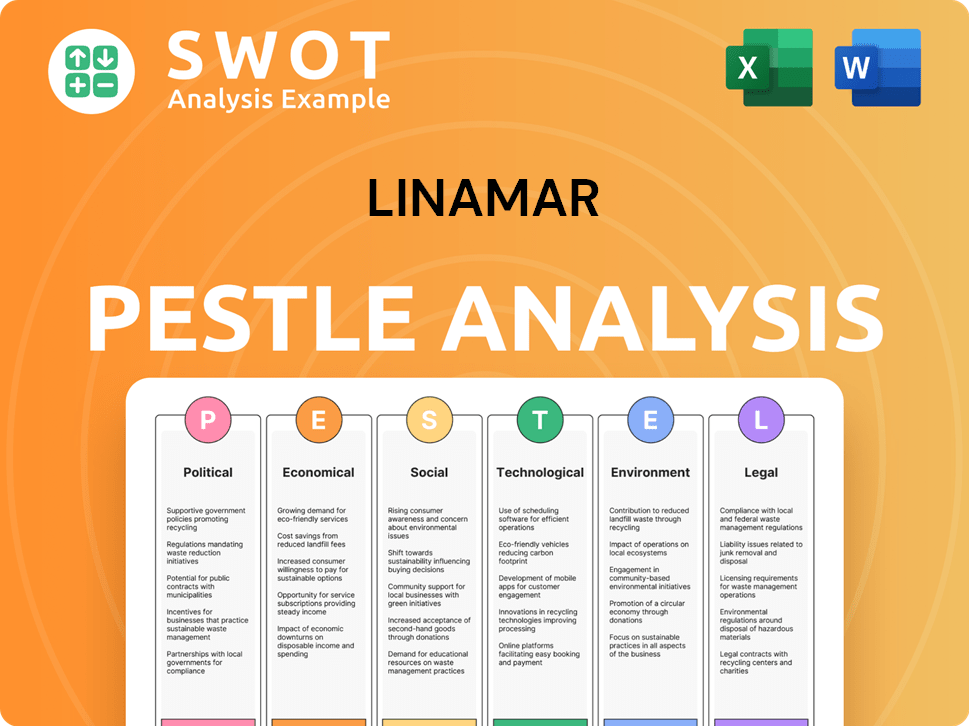
Who Sits on Linamar’s Board?
The current Board of Directors of the Linamar Corporation oversees the company's operations, incorporating representation from key shareholders, the founding family, and independent members. While a comprehensive list of board members for 2024-2025 isn't available, it's common for companies like Linamar to include the founding family on the board due to their significant ownership and historical influence. Linda Hasenfratz, the Executive Chair and daughter of founder Frank Hasenfratz, exemplifies the family's continued involvement in leadership and governance. The board typically comprises internal executives, representatives of major shareholders, and independent directors who offer external expertise and oversight. Understanding Linamar ownership structure is key to grasping its governance dynamics.
Board members often include a mix of internal executives, major shareholder representatives, and independent directors. These independent directors bring external expertise and oversight. Understanding the composition of the board is crucial for anyone researching Who owns Linamar and how the company is governed. The presence of the founding family, such as Linda Hasenfratz, indicates a long-term commitment to the company's direction. The board's role is to ensure the company's strategic goals are met while balancing the interests of all stakeholders.
| Board Member | Role | Notes |
|---|---|---|
| Linda Hasenfratz | Executive Chair | Daughter of founder Frank Hasenfratz |
| Internal Executives | Various | Representing company operations |
| Independent Directors | Various | Provide external expertise |
Linamar's voting structure generally follows a one-share-one-vote basis for common shares, ensuring proportional voting power for shareholders. However, the Hasenfratz family's significant ownership stake gives them substantial control over voting matters. There have been no recent proxy battles or governance controversies that have publicly reshaped decision-making, suggesting a stable governance environment. For further insights into the company's strategic direction, consider reading about the Growth Strategy of Linamar.
The Board of Directors includes the founding family and independent members. The voting structure is generally one-share-one-vote. Understanding the board composition is vital for anyone researching Linamar company.
- The Hasenfratz family maintains a significant influence.
- Independent directors provide external oversight.
- The voting structure is proportional to share ownership.
- Governance has been relatively stable.
Linamar Business Model Canvas
- Complete 9-Block Business Model Canvas
- Effortlessly Communicate Your Business Strategy
- Investor-Ready BMC Format
- 100% Editable and Customizable
- Clear and Structured Layout
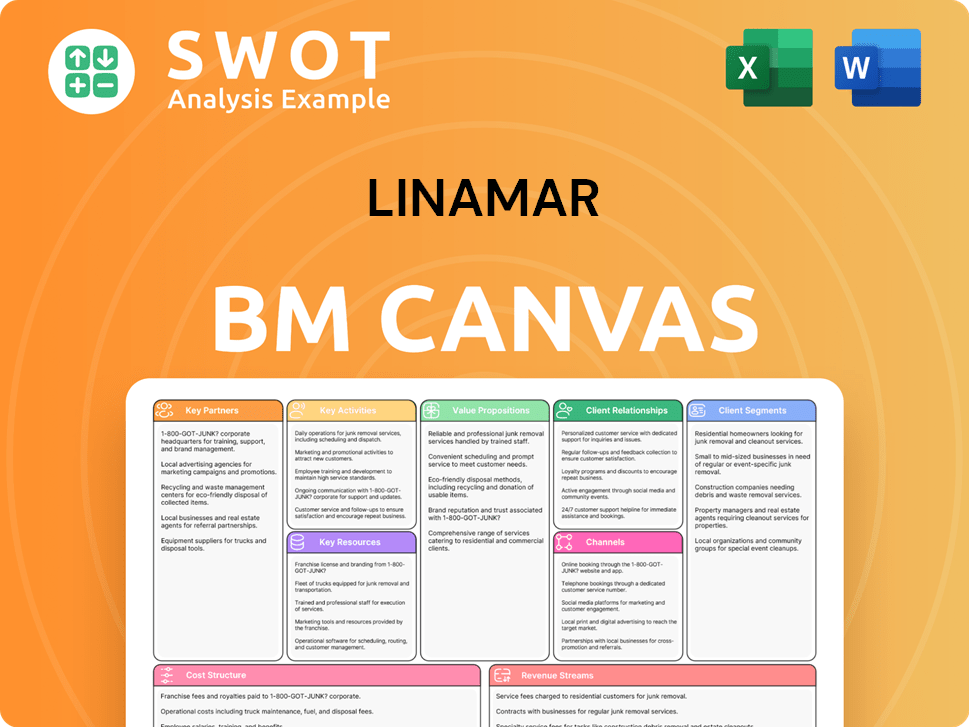
What Recent Changes Have Shaped Linamar’s Ownership Landscape?
Over the past few years, the ownership structure of the Linamar company has likely evolved, reflecting trends common to public companies. These changes can stem from share buybacks, secondary offerings, or mergers and acquisitions, which alter the distribution of shares. Such activities are usually detailed in financial statements, providing insights into shifts in ownership percentages.
Leadership transitions, such as the passing of founder Frank Hasenfratz in 2020, can also influence ownership dynamics, affecting family holdings and share distribution. Broader industry trends, including increased institutional ownership and the rise of activist investors, also play a role. The manufacturing sector, where Linamar operates, has seen ongoing consolidation and strategic investments, potentially increasing institutional interest in the company's stock.
| Ownership Trend | Possible Impact | Data Source |
|---|---|---|
| Increased Institutional Ownership | Higher trading volumes, potentially more stable stock price. | Institutional investor filings, company financial reports. |
| Share Buybacks | Reduced shares outstanding, increased earnings per share (EPS). | Company financial statements, press releases. |
| Mergers and Acquisitions (M&A) | Changes in shareholder base, potential for strategic realignment. | Announcements from the company, industry news. |
The company's performance and strategic moves, especially in areas like electric vehicles and industrial automation, will continue to influence its appeal to various investors. Information on future ownership changes, succession plans, or potential privatization would be found in investor relations materials or financial news outlets.
Institutional investors, such as mutual funds and pension funds, often hold significant stakes in publicly traded companies like Linamar. Their investment decisions can influence stock price and trading volume. These investors typically seek long-term value and stability.
Companies may repurchase their own shares to reduce the number of outstanding shares, which can increase earnings per share. This action often signals confidence in the company's future. Share buybacks can also boost shareholder value.
M&A activity can significantly alter a company's ownership structure. If Linamar were to acquire another company or be acquired itself, the shareholder base would change. These events often lead to shifts in company strategy.
The passing of a founder or major shareholder can lead to changes in ownership. Family holdings may be distributed, impacting the control and direction of the company. This can influence investor sentiment.
Linamar Porter's Five Forces Analysis
- Covers All 5 Competitive Forces in Detail
- Structured for Consultants, Students, and Founders
- 100% Editable in Microsoft Word & Excel
- Instant Digital Download – Use Immediately
- Compatible with Mac & PC – Fully Unlocked
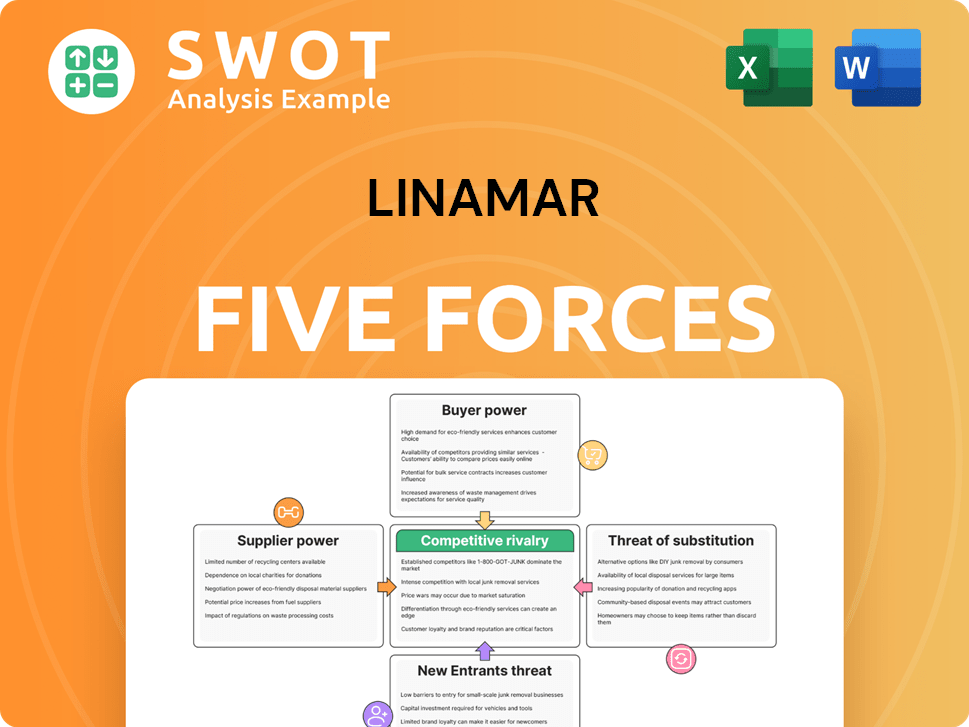
Related Blogs
- What are Mission Vision & Core Values of Linamar Company?
- What is Competitive Landscape of Linamar Company?
- What is Growth Strategy and Future Prospects of Linamar Company?
- How Does Linamar Company Work?
- What is Sales and Marketing Strategy of Linamar Company?
- What is Brief History of Linamar Company?
- What is Customer Demographics and Target Market of Linamar Company?
Disclaimer
All information, articles, and product details provided on this website are for general informational and educational purposes only. We do not claim any ownership over, nor do we intend to infringe upon, any trademarks, copyrights, logos, brand names, or other intellectual property mentioned or depicted on this site. Such intellectual property remains the property of its respective owners, and any references here are made solely for identification or informational purposes, without implying any affiliation, endorsement, or partnership.
We make no representations or warranties, express or implied, regarding the accuracy, completeness, or suitability of any content or products presented. Nothing on this website should be construed as legal, tax, investment, financial, medical, or other professional advice. In addition, no part of this site—including articles or product references—constitutes a solicitation, recommendation, endorsement, advertisement, or offer to buy or sell any securities, franchises, or other financial instruments, particularly in jurisdictions where such activity would be unlawful.
All content is of a general nature and may not address the specific circumstances of any individual or entity. It is not a substitute for professional advice or services. Any actions you take based on the information provided here are strictly at your own risk. You accept full responsibility for any decisions or outcomes arising from your use of this website and agree to release us from any liability in connection with your use of, or reliance upon, the content or products found herein.